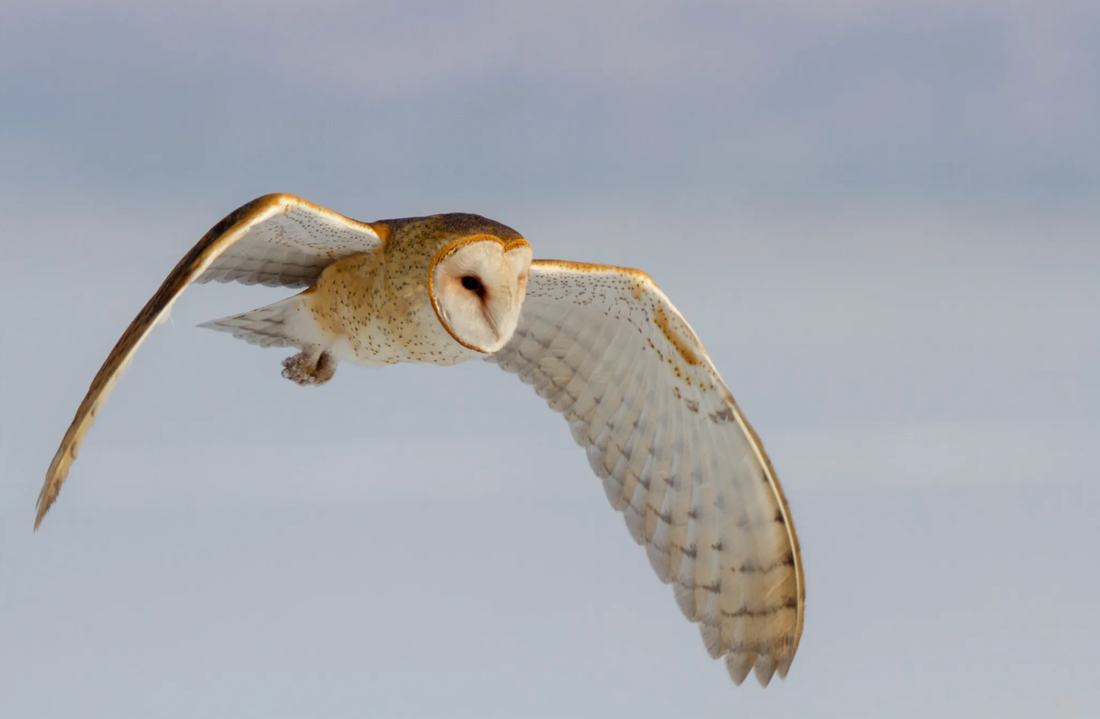Backyard Diversity is a series of educational articles brought to you in partnership with In Light of Nature, the Carol Petrie Foundation, the Los Alamos Reporter and Chama Peak Land Alliance. By highlighting the unique and special nature of our area, and in the hopes that a small drop in the water will send out waves of opportunity, we hope that each of us can and will improve our backyard with biodiversity. Photo by Ed MacKerrow BY ED MACKERROW In Light With Nature Photo by Ed MacKerrow
Pocket gophers are a constant threat to my orchard. They eat tree roots, starving the trees of water and nutrients. Setting gopher traps takes way too much of my time, and eventually, the gophers win the battle. The gophers are most active at night. They spend most of their time underground, only briefly coming above ground in the dark to move excavated soil from their tunnels. There must be a better way to find an ecological balance where the trees and gophers coexist. Owls, hawks, coyotes, bobcats, foxes, and snakes all prey on gophers. Since gophers and owls are most active at night, I pursued leveraging owls to help manage the gopher populations in the farming community of Nambe, New Mexico, where I live. We installed barn owl boxes on 12-foot-high poles in orchards and agricultural fields as a community. I would see and hear Great Horned Owls regularly and observe Barn Owls very infrequently. In the Central Valley of California, barn owl boxes populated many orchards, vineyards, and farms. I wanted to give them a try in Northern New Mexico. After a few years of not seeing or hearing any Barn Owls in my community, I finally listened to their “kleek-kleek” call (which sounds like a rusty bike chain) one night. On top of a barn owl box, I saw the tell-tale silhouette of a barn owl. In just a few weeks, fresh mounds of dirt from gophers disappeared. Barn owls are shy and will not come outside their box until darkness falls. I watched them through binoculars in the early evening, amazed at how many trips they made to the box with gophers in their bills. I set up a trail camera to look at their owl box and measured an average of over 11 gophers and nine mice per night delivered to the box over a month. Soon, neighboring farmers were wondering why they were not seeing gophers anymore. The barn owls motivated me to build and distribute more owl boxes around the area. Eventually, I installed 26 barn owl boxes on many farms. The owls would use different boxes each year, and we would rarely see or hear the owls since they are so reclusive. Barn owls are “flight hunters,” searching for prey by flowing low over the fields. With a bit of moonlight, I would sometimes watch them fly silently like a giant moth. Great-horned owls are “perch hunters,” using a sit-and-wait strategy to listen for prey. Owls have incredible stereoscopic hearing, which allows them to hear the faintest sounds of prey in underground tunnels or under deep snow. The owls continue to help me manage gophers, mice, and rats. The Great-Horned Owls have a constant presence, whereas the Barn Owl population fluctuates. An ongoing challenge is that everyone in my neighborhood needs to refrain from using rodenticides (rat and mouse poison). When a mouse eats rodenticide, the anticoagulant poison causes a slow death from internal bleeding. The poisoned mouse wanders for water to quench the deadly thirst from the poison, making them easy prey for owls. The owl and other predators and pets succumb to secondary poisoning and also die a slow death of internal bleeding. It takes cooperation and patience for a community to utilize owls for rodent control. Mice can become a nuisance in rural areas. I encourage neighbors to supplement our owl-based pest control with non-poisonous rat and mouse traps. If one person in the area resorts to unsafe rodenticides, then the efficient hunting owls end up dying from secondary poisoning. The success of barn owl rodent control in the agriculturally rich Central Valley of California gives me hope that, in the long run, owls will be our primary method of rodent control. Education and patience will help that happen. Ed MacKerrow of In Light of Nature, is a nature photographer, scientist, and conservationist. He has a Ph.D. in Physics and specializes in studying complex adaptive social systems. He has provided scientific expertise to the US Government on various subjects, including forest ecology and wildlife conservation. Ed is the President of the Friends of the Nambe Badlands, dedicated to protecting sensitive BLM land in Northern New Mexico, a Board member of Katmai Conservancy for Katmai National Park in Alaska, and served as the Vice President of the Friends of the Bosque del Apache National Wildlife Refuge. Ed is dedicated to environmental conservation and ethical practices in nature photography. He maintains a blog called “In Light of Nature,” which explores wildlife, conservation, and nature photography.
0 Comments
Your comment will be posted after it is approved.
Leave a Reply. |
Submit your ideas for local feature articles
Profiles Gardening Recipes Observations Birding Essays Hiking AuthorsYou! Archives
October 2025
Categories
All
|




 RSS Feed
RSS Feed